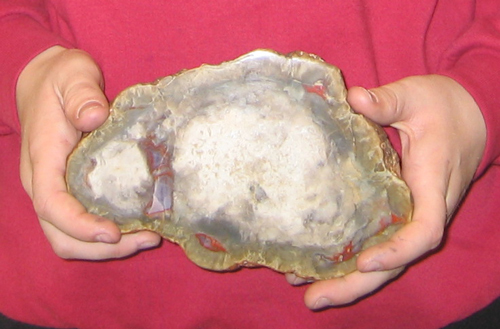Wandering Massospondylus – Prosauropod on the Move
Gastroliths of Massospondylus – Long Distance Travellers
The long-necked, long-tailed herbivore from the Early Jurassic known as Massospondylus lived in two different parts of the world. There was M. carinatus, named in 1854 by Sir Richard Owen, the English anatomist and scientist who first coined the term Dinosauria and the much more recently described Massospondylus kaalae whose fossils have been found in Southern Africa. A number of other species have been proposed over the years, but these are now mostly regarded as nomen dubium.
It is likely that this dinosaur was mainly herbivorous, although it could also have eaten smaller reptiles and insects. The hind legs were much longer than the front ones and it has been suggested that this dinosaur was a facultative quadruped, that is, it normally adopted a bipedal stance but perhaps when feeding it adopted a four-legged stance. A number of stomach stones (gastroliths) have been found in association with Massospondylus fossil remains. Such stones would have been held in a gizzard and used to help crush vegetation that these five metre long dinosaurs had swallowed. The action of the stones in the muscular gizzard would have helped grind the tough vegetation into a digestible pulp. Many types of modern birds do exactly the same today.

“Shiny side up” the joys of “dino dung”. Dinosaur coprolite, but too big for a Massospondylus. Picture credit: Everything Dinosaur.
Picture credit: Everything Dinosaur
Fossils of a Massospondylus discovered in Zimbabwe (southern Africa) had gastroliths preserved in the dinosaur’s belly area that had came from a distance of over twenty kilometres away (twelve miles). It seems that these Early Jurassic dinosaurs were fussy over the types of stone that they swallowed to help them digest their food.
Everything Dinosaur stocks an extensive range of Early Jurassic dinosaur models, we recommend that you take a look at the huge CollectA Age of Dinosaurs Popular range: Age of Dinosaurs Popular Range.

